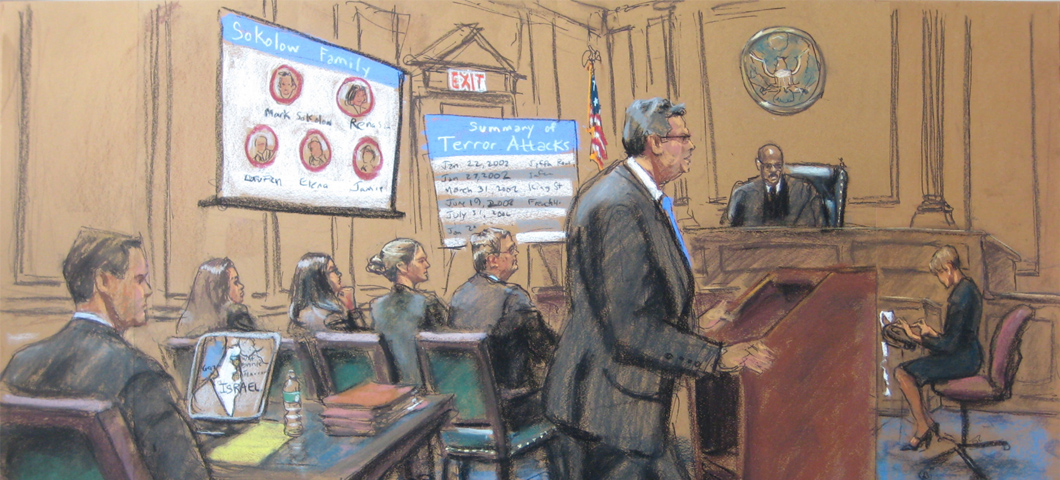Achieving Success in Courtroom Trials: The Significance of Expert Trial Presentations
Achieving Success in Courtroom Trials: The Significance of Expert Trial Presentations
Blog Article
Navigating the Intricacies of Trial Presentations: Tips for Seamless Delivery and Engaging Arguments
In the world of lawful proceedings, the art of trial presentation stands as a crucial component of success. The intricacies inherent in test discussions require a delicate balance of finesse, skill, and strategy.

Recognizing Trial Goals
To successfully browse a trial, it is essential to have a clear understanding of the goals that require to be attained. Before stepping into the court, lawful groups have to specify their goals and desired outcomes. These goals work as assisting concepts throughout the test, forming approaches and affecting decision-making procedures.
Understanding trial objectives involves an extensive analysis of the situation, legal precedents, and the client's benefits. Trial Presentations. It requires a precise evaluation of the truths, determining essential problems, and expecting prospective difficulties. By establishing certain and measurable goals, lawyers can customize their presentations and arguments to align with the wanted outcomes
Additionally, a clear understanding of trial objectives makes it possible for lawful teams to prioritize proof, witnesses, and lawful disagreements efficiently. It permits the growth of a systematic narrative that resonates with the court and court, strengthening the overall instance presentation.

Organizing Proof Successfully
Having a clear understanding of test goals lays the foundation for arranging evidence properly in legal process. By lining up the presentation of proof with the desired end results of the trial, lawful teams can reinforce their arguments and boost their persuasiveness.
One more crucial element in organizing proof effectively is developing a logical flow. Offering evidence in a consecutive and systematic way can aid build an engaging narrative that supports the lawful arguments being made. Furthermore, making use of visual help such as timelines, charts, or charts can further enhance the organization of evidence and assist in clearing up intricate relationships or series of events.
Additionally, making sure that all proof offered is acceptable and relevant to the situation is important. Pointless or inadmissible proof can detract from the strength of the disagreement and possibly damage the integrity of the presenting party. A careful testimonial and choice procedure ought to be embarked on to include only the most impactful and legitimately audio proof in the trial discussion.
Crafting Persuasive Stories
Crafting engaging narratives plays a pivotal duty in providing influential disagreements during lawful proceedings. When creating a narrative for a test presentation, it is essential to develop a clear storyline that highlights crucial points and links them in a coherent way. By weaving together proof, testimony, and lawful arguments into a influential and cohesive story, lawful experts can properly promote for their customers and increase the probability of a favorable result in the court room.
Grasping Aesthetic Aids
Effective use aesthetic aids is crucial to boosting the impact and clearness of test discussions. Visual aids, when made use of strategically, have the power to simplify complicated details, reinforce essential factors, and leave a lasting impact on the discretionary. To understand visual aids in test discussions, it is important to make certain that they are clear, concise, and relevant to the arguments being made.
When incorporating visual aids, his explanation such as charts, pictures, timelines, or charts, right into a test discussion, it is important to keep them visually appealing yet expert. The visuals must enhance the spoken debates, giving an aesthetic depiction of the details being reviewed without frustrating the target market with unneeded information.
In addition, exercising with the aesthetic help in advance is critical to ensure a smooth distribution throughout the test. Familiarizing oneself with the content, transitions, and timings of each visual help can aid preserve the flow of go the presentation and prevent technological problems that might develop.
Providing Impactful Closing Disagreements
An engaging closing argument offers as the culmination of a test presentation, enveloping the core narrative and convincing the court and jury in the direction of a beneficial choice. Begin by outlining the major arguments that sustain your customer's position, stressing why the evidence provided throughout the test supports your narrative.
Additionally, including psychological appeal can even more enhance your closing disagreement. Inevitably, a well-crafted closing debate need to leave a lasting impression, compelling the judge and jury to rule in your client's favor.
Conclusion
In conclusion, mastering trial presentations involves understanding objectives, organizing evidence, crafting narratives, utilizing aesthetic help, and supplying impactful closing debates. By applying these approaches properly, legal representatives can offer their instance effortlessly and make engaging disagreements in the courtroom. It is essential to navigate the complexities of test discussions with precision and skill to achieve success in lawful process.
By lining up the presentation of evidence with the wanted end results of the trial, legal groups can reinforce their disagreements and enhance their persuasiveness (Trial Presentations). To master aesthetic aids in trial discussions, it is vital to guarantee that they are clear, concise, and pertinent to the debates being made
A compelling closing argument offers as the conclusion of a trial discussion, Homepage encapsulating the core narrative and encouraging the judge and court in the direction of a beneficial choice. Begin by detailing the main debates that support your client's position, highlighting why the evidence offered throughout the test supports your narrative.In final thought, grasping test discussions involves understanding goals, organizing proof, crafting narratives, making use of visual help, and delivering impactful closing debates.
Report this page